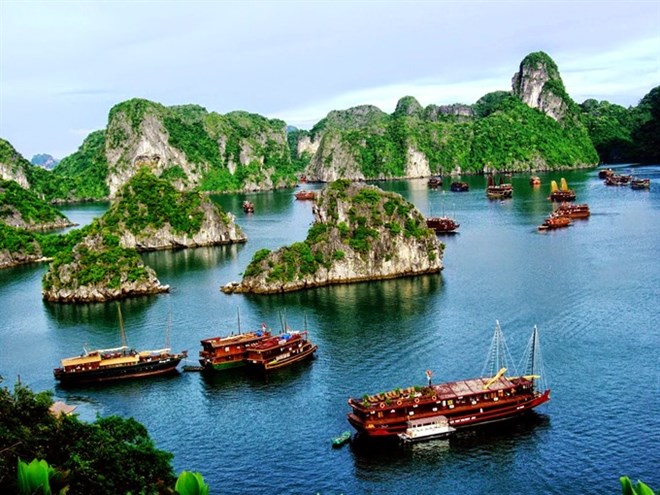
Preservation of cultural and natural heritage sites plays an important role in tourism growth in Vietnam, experts said at a conference on November 30 in HCM City.
The UNESCO-recognised world
heritage site Ha Long Bay welcomed 6.9 million visitors last year, earning
nearly 10.8 trillion VND (463 million USD) in revenue. — (Source:
chudu24h.com)
Vo Van Thanh of the Southern Institute of
Social Sciences (SISS), said thanks to tourism, protection, conservation and
restoration of world heritage sites were improved.
"In Vietnam, heritage tourism activities have contributed to introducing
the country’s World Heritage sites,” he said.
The conference, which discussed the opportunities and challenges for cultural
heritage values, was organised by the HCM City University of Culture in
collaboration with SISS, the HCM City Institute for Development Issues, and the
International Centre for the Study of the Preservation and Restoration of
Cultural Property (ICCROM).
More than 300 cultural experts and researchers from Vietnam and abroad took
part in the event.
Preservation of heritage sites has helped create jobs and improved living
standards in local communities, Thanh said.
Last year, heritage sites brought a high level of visitors and revenue from
ticket sales and tourism services, according to the Ministry of Culture, Sports
and Tourism’s Cultural Heritage Department.
Ha Long Bay in Quang Ninh province, for example, welcomed 6.93 million visitors
last year, including 2.9 million foreigners, a year-on-year increase of 12.9
million.
Its tourism revenue reached nearly 10.8 trillion VND (463 million USD), a rise
of 39 percent compared to 2016.
The Hue Citadel welcomed 3 million visitors, including 1.8 million foreigners,
earning 320 billion VND (13.7 million USD) from entrance ticket sales, a
four-time increase compared to 2011.
Nguyen Thi Thu Trang of the cultural heritage department said: "Tourism is
considered a motivating factor to protect cultural and natural heritage sites.
It is one of the most effective means for cultural exchange between Vietnam and
the world.”
Vietnam has eight UNESCO-recognised World Heritage sites and eight
UNESCO-recognised world biosphere reserves.
The World Heritage sites are the Hue Citadel, Ha Long Bay, Hoi An Ancient Town,
My Son Sanctuary, Phong Nha – Ke Bàng National Park, Thang Long Royal Citadel
complex, and Ho Dynasty Citadel.
The biosphere reserves are the Can Gio Mangrove Forest in HCM City, Nam Cat
Tien National Park in Dong Nai and Lam Dong provinces, Cat Ba Archipelago in
Hai Phong city, Hong (Red) River Delta, Kien Giang biosphere reserve in the
Mekong Delta, Cu Lao Cham in Hoi An, Western Nghe An, and Ca Mau Cape in the
southernmost province of Ca Mau.
Source:VNA
The People’s Committee of Lac Son district held a ceremony on April 28 to receive the provincial relic certificate for the ancient rock carving site at Suoi Co stream, located in My Thanh commune.
A special music show titled "The country is in the fullness of joy” has been held at Hoa Binh Square in Hoa Binh city in celebration of the 50th anniversary of the liberation of the South and national reunification (April 30, 1975–2025).
The People's Committee of Lo Son commune, Tan Lac district, has organised the local annual traditional stream fishing festival on April 19 - 20.
As a land deeply intertwined with human history and Vietnam’s millennia-long journey of nation-building and defence, Hoa Binh is often revered for its epic tales and legends.
Residents of Hoa Binh boast a rich cultural identity, reflected in their unique language, traditional attire, customs, and folk melodies – described as "sweet as honey, clear as a mountain stream.”
Lac Son district’s Vu ban town held the 2025 Truong Kha temple festival on April 12–13 (the 15th–16th days of the third lunar month). Since its revival in 2019, the festival has been organised every three years, preserving valuable intangible heritage while meeting the community’s cultural and spiritual needs.



